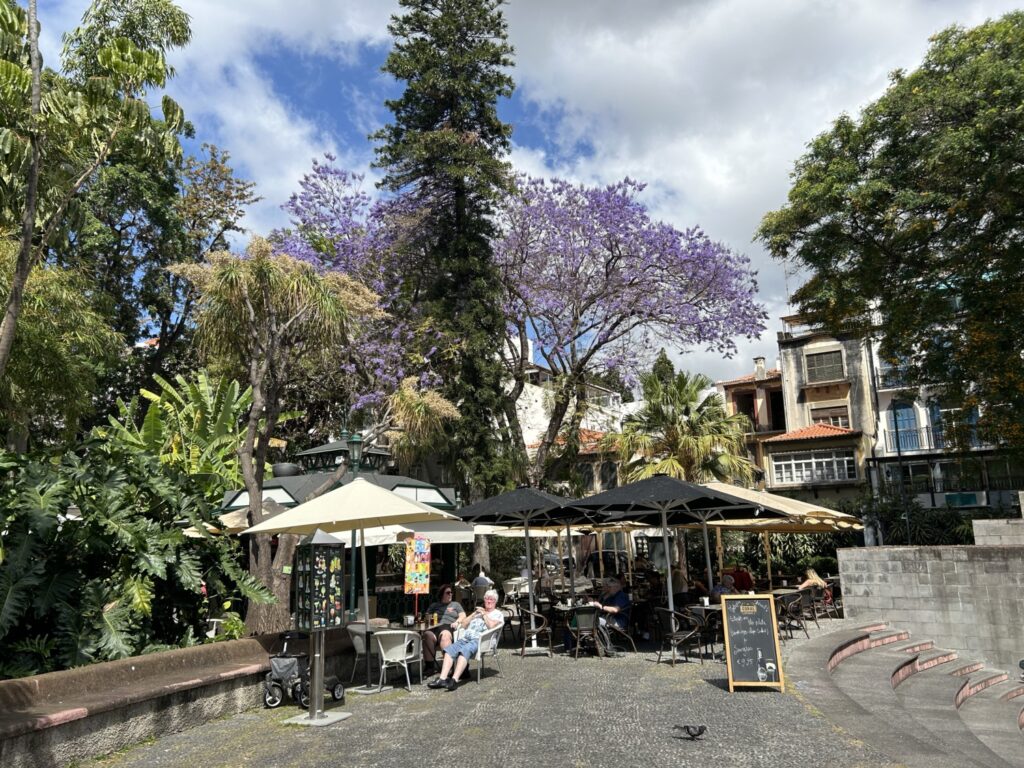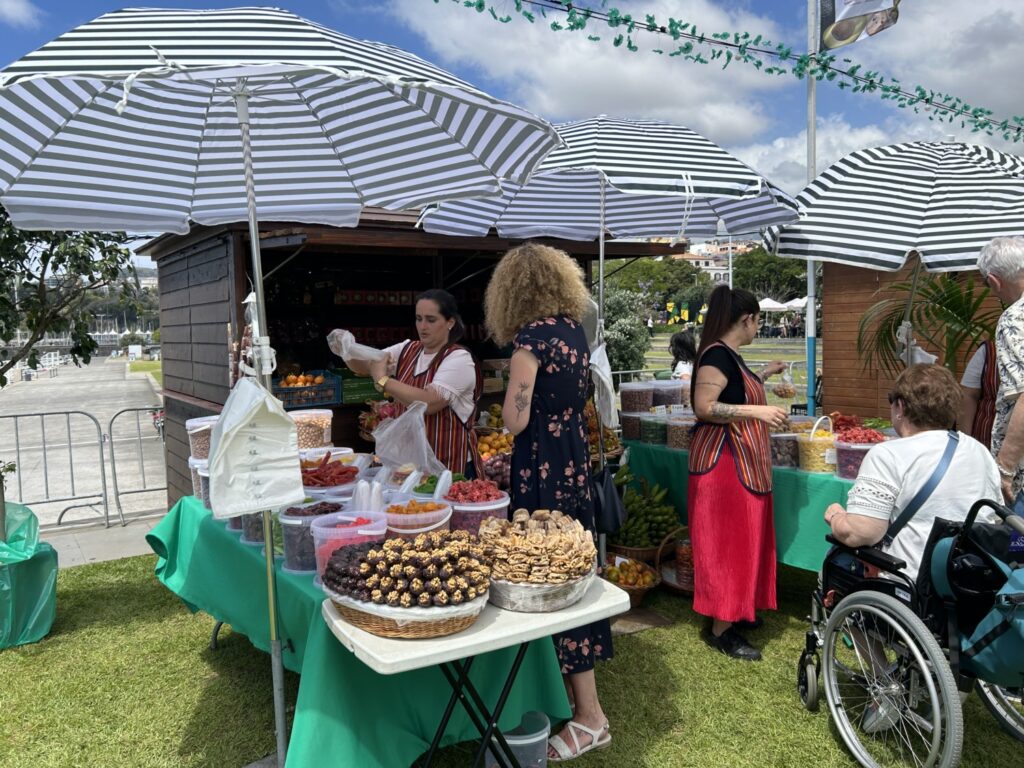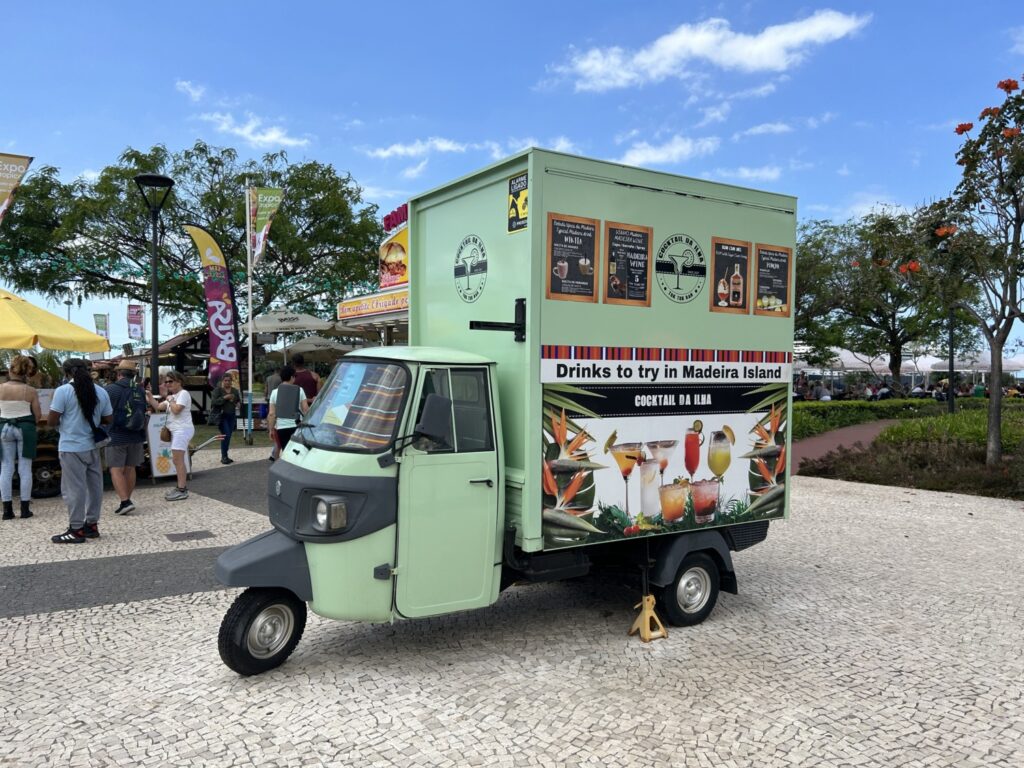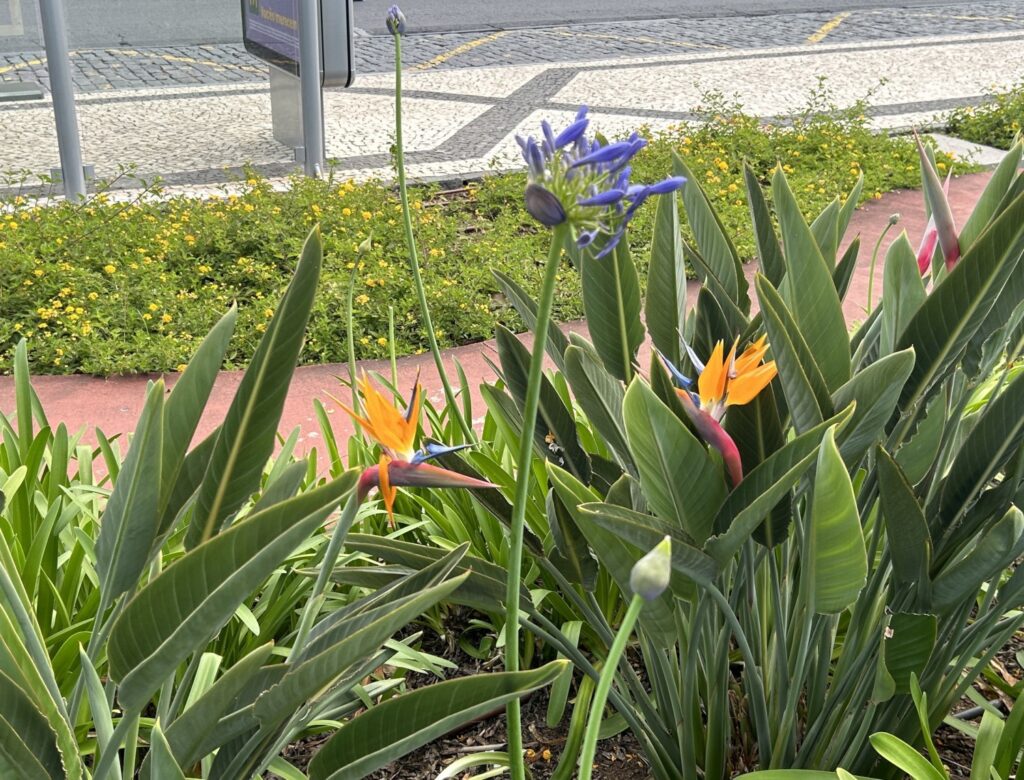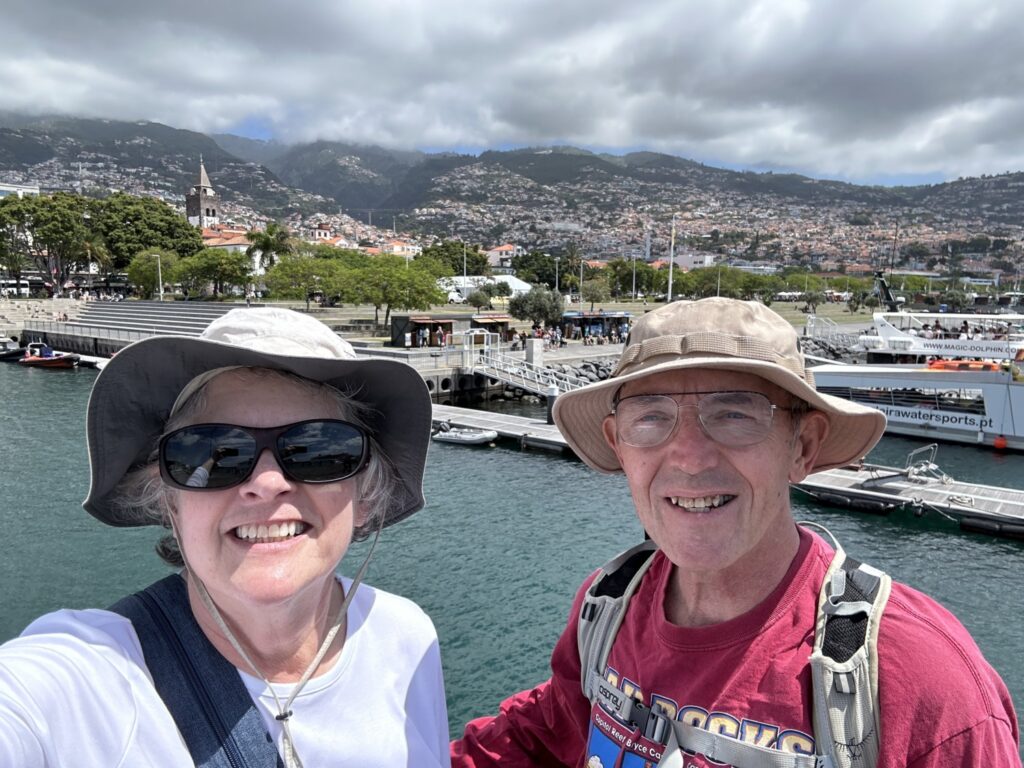Our first port on this part of our cruise was the city of Funchal, Capital of the Island of Madeira, Portugal. We had a perfect day for our visit. As a bonus, it was Freedom Day, kind of like our 4th of July. On the one hand, Freedom Day meant that many buisnesses and museums were closed. On the other hand, the tourists were wildly outnumbered by the Madeirans who were out enjoying the holiday with their families.

Funchal is the largest city, the municipal seat and the capital of Portugal‘s Autonomous Region of Madeira. The city has a population of 105,795 which is half the total population of Madeira. It is the sixth largest city in Portugal and one of its main tourist attractions. The island was settled by the Portuguese in 1424. João Gonçalves Zarco is credited as being the founding father when he settled here with members of his family.

To aid in agricultural production, levadas (aqueducts) were built from the wetter north side of the island to bring water to the drier south side. Those levadas make great hiking trails today, although they can still be full of water at certain times of the year. Funchal and the island of Madeira are probably best known for Madeira wine, although rum is another item produced in quantity on the island.
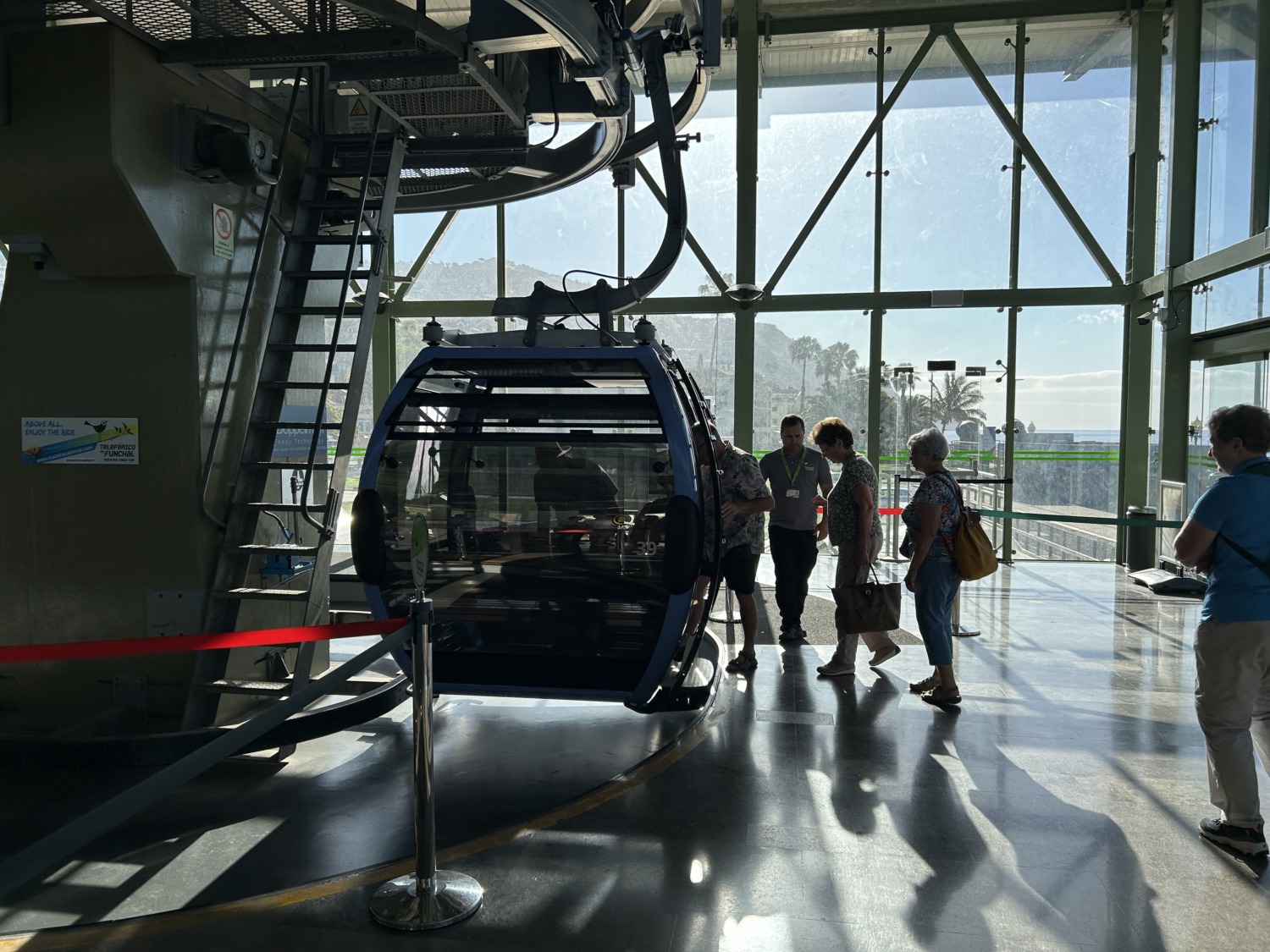
Tom and I had a list of things we wanted to see in Funchal, so we set out as soon as we got the all-clear in port. There was a free shuttle running from the port to the City Center and we took advantage of that this morning. It enabled us to be some of the first people at the Teleferico do Funchal, which is the Madeira cable car. The Teleferico takes you from Funchal up the side of the mountain to Monte, rising 1,800 feet over the rooftops in just 15 minutes. We were able to walk right on the Teleferico and avoid the long lines that formed later in the day.

The only problem was, what to do when we got to the top? We had heard the botanical garden was beautiful, but we aren’t really into botanical gardens when we can spend time learning about history. The Carreiros do Monte are a top attraction. The Carreiros take tourists, two at a time, back down the mountain in a sledge (sled with wooden runners. The sledge is guided by two guys using just their feet to steer and brake. It might be exciting, but Tom and I decided we had enough health scares this trip already. We saw the Carreiros driving up the mountain in a truck loaded with sledges. They are a brave group of men.

We walked around Monte a little bit and checked out the Chapel of the Immaculate Conception. The Chapel was built in 1906 but was completely destroyed by a hurricane in 2010. It was rebuilt and dedicated in 2022. The only thing they found from the original church was the bent crucifix. The crucifix is on the altar.

Tom and I had a long list of things to see in Funchal, so we headed back down the mountain in a return cable car. The line was much longer at the base station than when we left. We walked along the nicely developed shoreline to the Yellow Fort, or the Fortress of Sao Tiago. The Fortress dates from the early 17th century and protects the Zona Velha (Old Town). Over the centuries, the Fortress of São Tiago has undergone several renovations. Most recently, it has become the home of the Contemporary Art Museum.

Tom and I walked all the way around the Fortress of Sao Tiago. We entered the courtyard, but could not find another entrance for the upper part of the Fortress. The Contemporary Art Museum was closed for Freedom Day. Instead, we walked through Zona Velha on Rua de Santa Maria. This is one of the oldest streets in Funchal. In an effort to revitalize the street after the hurricane of 2010, artists began painting the doors along Rua de Santa Maria. The doors are a colorful and friendly sight in the city.

Having walked around Zona Velha we headed to another museum, Madeira Story Centre. We were hoping to learn more about the island’s history and culture, but it was also closed for Freedom Day. Or – if it was open – we couldn’t find the entrance. We found the restaurant and a craft shop in the front of the Story Centre, but no entrance.
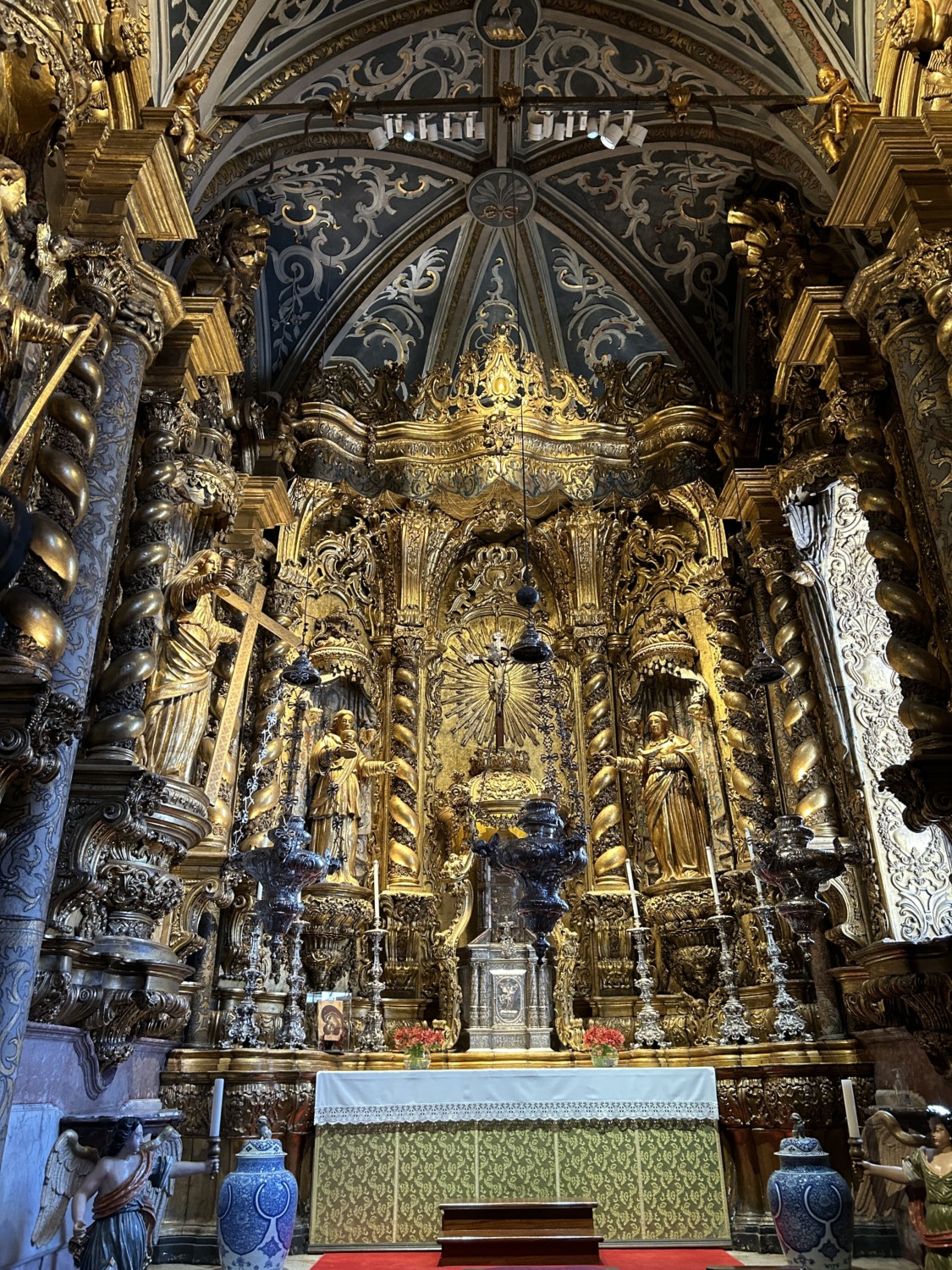
Instead we continued to Funchal Cathedral. Fortunately this was open. In fact, they had just had a blessing for Veterans from the Freedom Day Uprising. The veterans left the cathedral to participate in a parade just as we were entering Cathedral square. The Cathedral was built from 1490 through 1518. It is made of volcanic rock and has marvelous carvings inside. The ceiling features a Mudéjar-inspired design and of local cedar. The wooden choir stalls depict prophets, saints and apostles in 16th-century garb. In the decorative details of the seats and armrests, aspects of Madeira’s life can also be seen, such as cherubs carrying a bunch of bananas or a wineskin. The Funchal Cathedral was very impressive and Tom and I spent some time just admiring its beautiful interior.
Once we finished at the Cathedral, Tom and I checked out the giant Freedom Day party being held along the shoreline. There were vendors, crafts, music, political speeches, dancers, and games and activities for families. We sat at a cafe for a little while watching the children try some old-fashioned activities such as stilts and tug-of-war. The best part of the festival was the food trucks with lots of genuine Madeiran food. We were intrigued by the meat kabobs being served with bread, but settled on sharing a malassadas, a Portuguese donut fried in front of us and covered with sugar and cinnamon. Delicious!

We saw the Groupo Folclorico de San Martinho, a dance group in traditional costumes. They were wearing the Carapuca, which is a hat that looks like an inverted funnel. They performed folk dances accompanied by drum, accordian, and mandolin. It was a piece of culture that was even better because it we didn’t expect to see it.
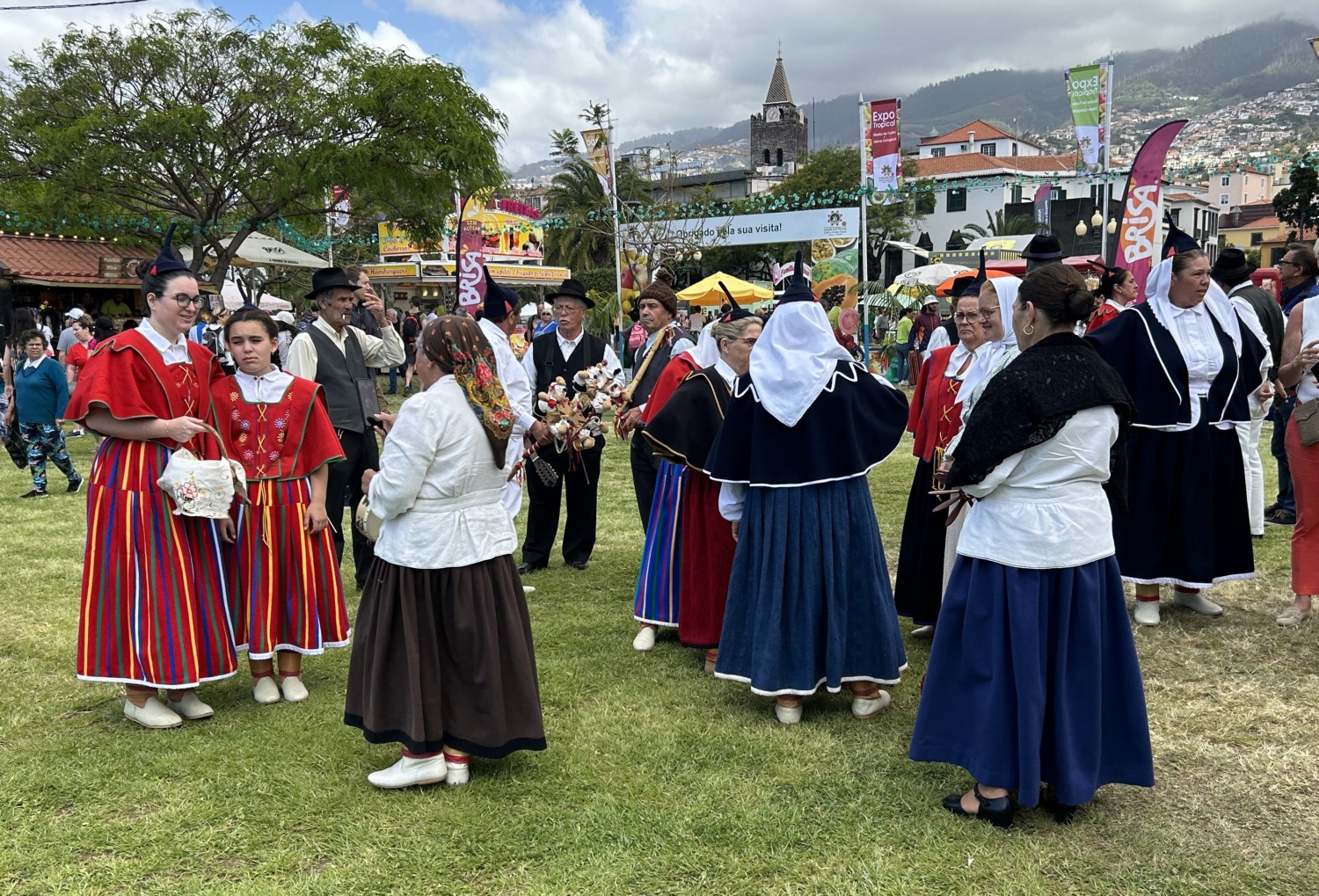
By the end of the day, Tom and I were tired and felt like we had seen a lot of Funchal. It was a beautiful, clean city with lots of history. We enjoyed celebrating their Freedom Day with them.



